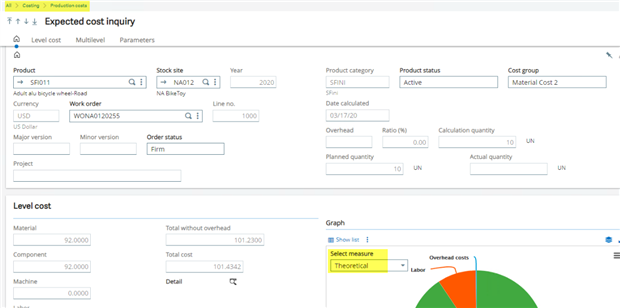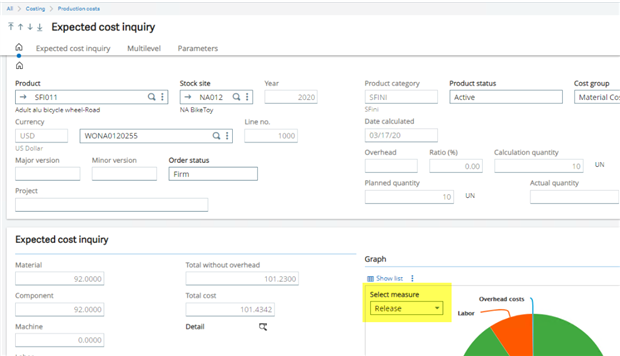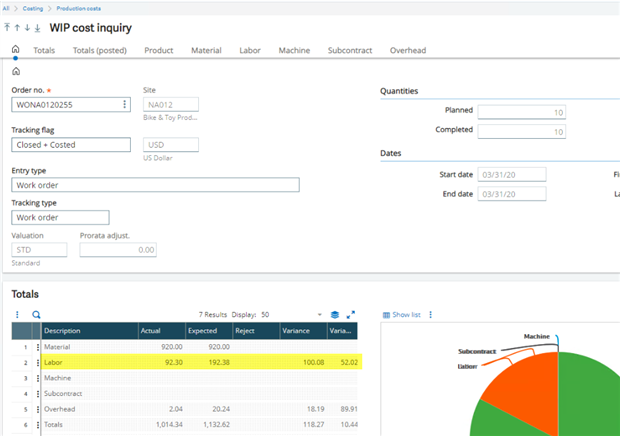When a work order is created, processed and costed, three different costs are involved:
First cost is called Theoretical cost. This cost in the current standard cost and is usually set once a year through the cost rollup for a selected site and selected manufactured product. Once set, it becomes a fixed point of comparison for the site where it is calculated. It normally remains unchanged throughout the year. Users of Sage X3 may change the established standard cost by performing a second cost rollup calculation for the year or directly creating a new STD cost record in Common data, Products-costs, Standard costs.
Once a work order is created, the theoretical cost can be viewed under Costing, Expected cost inquiry and selecting the Theoretical record.

Second cost is called Provisional/Release cost. This cost is the calculated cost to produce the work order at its current configuration. When a work order is created, the material to be used is taken from the BOM and the operations to be performed is taking from the routing. If the materials or routings that are used on the work order have changed since the last STD cost rollup, the calculated provisional cost of the WO will differ from the previously calculated STD cost. Also, the provisional cost might not match the STD cost if the material or the routing details of a work order are changed manually during or after the work order creation. The Provisional cost can be accessed from the work order Right panel under Provisional cost inquiry or from Costing, Expected cost inquiry and selecting the Release record.

The third cost is called Actual cost, and this is the actual cost to produce the work order. It is calculated from the tracking documents entered against the work order after production has begun. Any costs related to the completion of the work order production are tracked. This includes labor, machine time, overhead, subcontract activities, materials consumed, and products produced. When the work order is closed and costed, the final cost is calculated using the entered tracking. When the results are posted to the General Ledger, variances both positive and negative are calculated and posted to the appropriate accounts. The variances are calculated based on the fixed standard cost and the final results can be viewed under Costing, Production costs, WIP cost inquiry.


